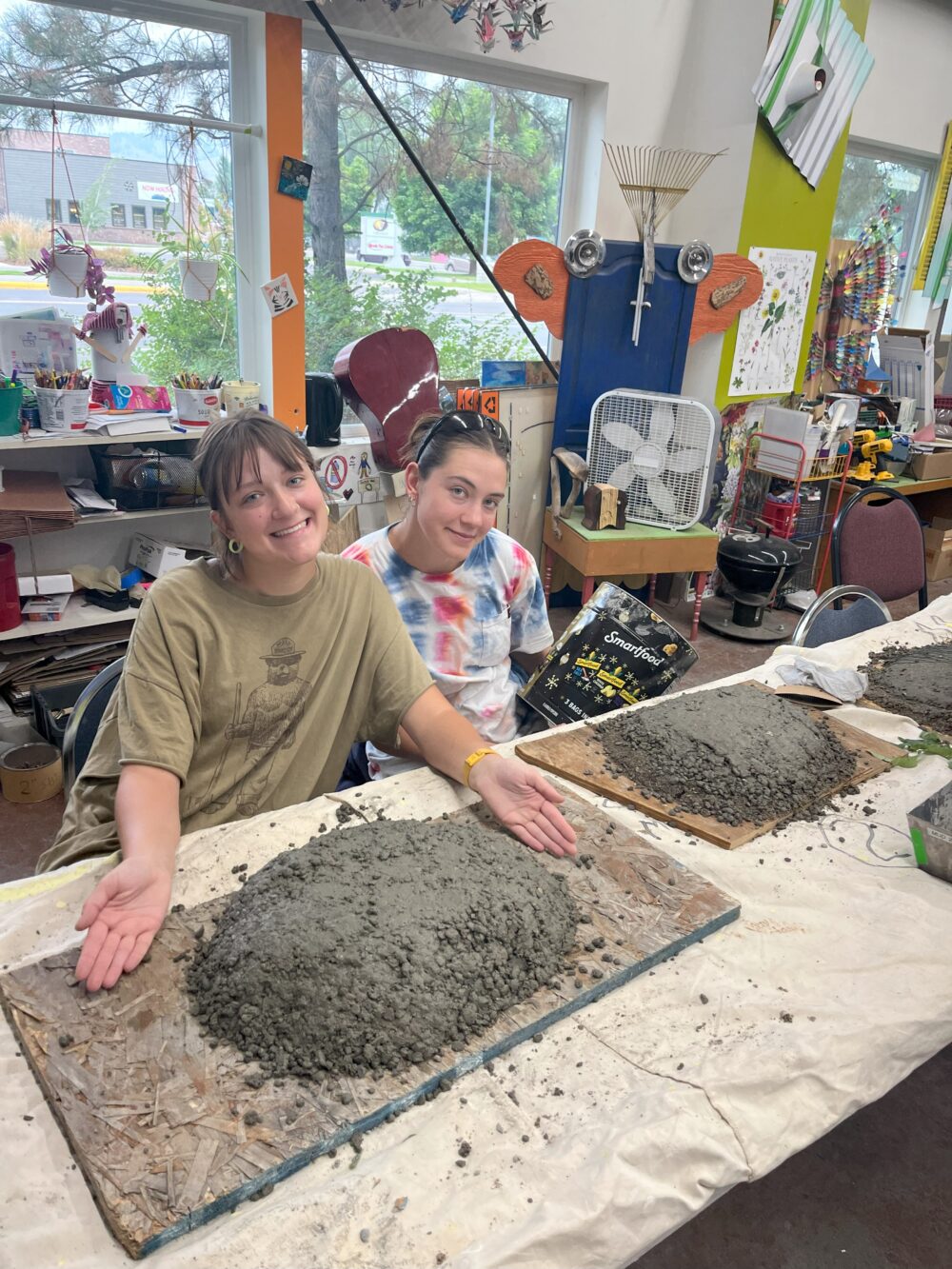We have much more to do and your continued support is needed now more than ever.
My Home Energy Audit: Finding Treasures in the Attic

It has been on our family’s “honey-do” list for years – a home energy audit. With few dollars to spend, and limited understanding of home construction, we wanted to know what investment would give us the greatest return. We want both lower energy bills and a more comfortable home.
Then we learned that the state of Virginia is offering $250 to any Virginia homeowner who hires a Virginia home energy audit company. This program started June 20 and lasts until the funds run out. This incentive program was our “tipping point” that pushed us beyond home energy audit procrastination. We hired a company named ecobeco. Their audit costs $450, so the $250 incentive covers more than half. Many states have incentive programs. See a list of Department of Energy energy savings incentives.
Are you a Virginia homeowner? At the Virginia Home Efficiency Rebate Program, it took about 15 minutes to make an account. Our home energy audit incentive request was approved in less than a day.
How do we choose a home energy audit company?
In the past, I surfed home energy audit company websites and tried to do a side-by-side comparison of services, but it got overwhelming. I talked to companies at local green and Earth Day events, and asked them “how would you choose a company?” The most common advice was to choose a company that did not have another product, like solar panels or insulation, because they would be motivated to push you toward that product. But honestly, I chose ecobeco because that’s where I learned about the Virginia incentive in the first place – in their monthly e-newsletter.
What is in a home energy audit?
Our home energy audit lasted just under four hours. Our energy auditor was Jonathan Ferree. When I asked if I could take photos and blog about it, he responded with a great sense of humor. He was excellent at explaining what he was doing and finding with each test. After reviewing our energy bills and hearing our concerns, Jonathan did three activities:
1. Worst Case Depressurization Test
2. Attic Inspection
3. Blower Door Test
What is a Worst Case Depressurization Test?

This test ensures your natural gas appliances are working so you would not have carbon monoxide poisoning, and that any fumes are being expelled out of your house.
This involved closing windows and doors, turning on the blower fan over the stove, and testing our natural gas appliances (water heater and furnace). He drilled small holes in the flues that come from those appliances, and stuck a device in there to test the wind speed inside, as well as look for carbon monoxide. He lit a small flame to ensure the smoke was sucked up into the flue.
Our systems passed, although Jonathan noted that we only have one carbon monoxide detector, and it’s on our second floor. He said that by the time that detector would sense carbon monoxide, it would be too late – our house would be filled with carbon monoxide because it’s heavier than most air. He recommended a carbon monoxide detector on each floor. According to the Center for Disease Controls and Prevention, about 500 Americans per year die from carbon monoxide poisoning.
Batts in the Attic

Throughout the attic, there was yellow insulation. Some was blankets or “batts” on the walls. Some was fluffy and loose along the floors. There seemed to be plenty but Jonathan taught me how to look with an energy auditor’s eyes. We saw:
- Stained insulation – In joints where the roof met a wall, the insulation was dark gray instead of yellow. Jonathan said this happens when there is air flow, and air flow means a leak.
- Visible floor joists – The wood that forms the skeleton of our house, or joists, is only about four inches thick. So if I can see the floor joists, that means the insulation is four inches or less. You are supposed to have about eight inches of insulation for the best energy saving. Or if you are talking about a gap between two sections, the insulation should fill it. We had gaps that were 14 inches wide in some places, with only an 11 inch batt.
- Gaps between insulation and wood – Especially with the batts, there were often gaps. Sometimes the gap was only about an inch. I can imagine if I was a building contractor, I would want to put those batts in place and get the heck out of such a hot space. But even one inch gaps allow a lot of energy waste. I think you’d have to be a perfectionist to lay insulation batts perfectly. That’s why Jonathan says that blown insulation is usually better.
- Insulation should lie evenly – For the best energy saving, insulation should lay like an untouched blanket of snow. Mine looked like someone had a snowball fight. The insulation was non-existent in some places and piled up in others. Jonathan said that sometimes contractors who are laying wire will smoosh insulation around – compressing it and moving it – making it ineffective.

Jonathan suggested hard-sided insulation or blown cellulose would likely be the best investment we could make to reduce our home energy use. It would address our worst comfort issues, that our upstairs is much hotter in summer and colder in winter. Effectively, that poorly insulated attic was cooking or freezing us in our bedrooms!
We also talked about attic fans. Attic fans are supposed to be attached to a thermostat. When the attic hits a certain temperature, the fan should automatically turn on and blow the hot air out through a vent.
Our attic fan is actually attached to a light switch, and that same switch controls a fan inside our bedroom. That’s not helpful! There is nothing automated at all. We would need to hire an electrician to separate these two fans, and make sure the thermostat part of the fan is working.
Blower Door Test

This was the part I had been waiting for – the “finale” of our audit. I had seen photos of blower door tests before – where the auditor puts a cloth covering on your front door, then puts a big fan in that blows air into your house. Jonathan said it was like a 55 mile an hour wind blowing on every window and door of the house. This allowed us to walk around and put our hands near any opening to feel for drafts. We also looked at everything with an infra-red device that showed temperature differences.
I was surprised to find our windows and doors were in great shape. In the winter, my family has felt drafts from the windows, so I thought the first recommendation would be to replace our windows – at great cost. But Jonathan said replacing windows rarely is the best plan to cut your energy bill. Windows conduct heat and cold, that’s a fact, and while a more energy efficient window may cut a draft – often you won’t see a difference in your energy bill. If we wanted to cut down drafts, we should replace the windows for that reason, but we should not be disappointed if our energy bills stayed the same.
We were pleased to find few gaps in insulation as we toured the house – until we got back to that leaky attic. There we found areas where the temperature was higher than 110 degrees Fahrenheit.
Making the Best Home Ever
It is likely that insulating and sealing our attic will be the next step. As I think about all the attics around the world with messy ineffective insulation, and all that leaked cooled and heated air – what a huge waste! For all the effort it takes to teach my children to turn off the lights, there is this huge unseen space that quietly wastes energy. Imagine if we all just smoothed out our insulating blankets? How lovely to fix something once and know it keeps working without any reminders!
Jonathan will now prepare an in-depth report that will estimate how many years it would take to make back that investment. Like any home improvement project, I have a greater appreciation of this structure we call a home. Spending time in the attic felt therapeutic. It was like digging into the deeper recesses to understand how things work behind the scenes – and how to make things work better every day.
Stay tuned to hear about the final recommendations and our next steps!





















